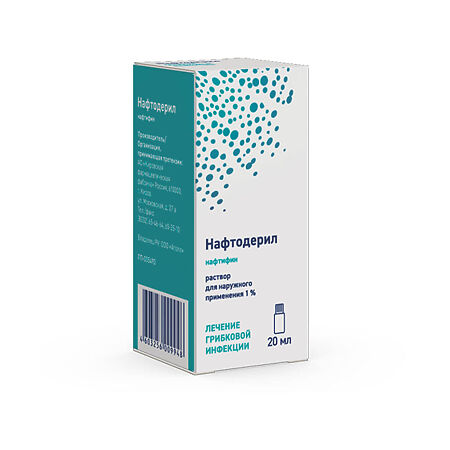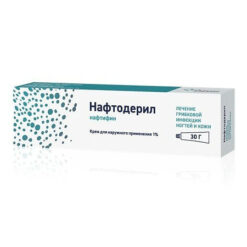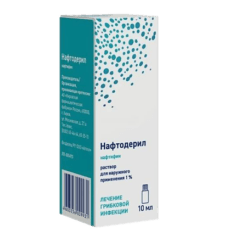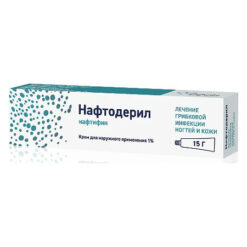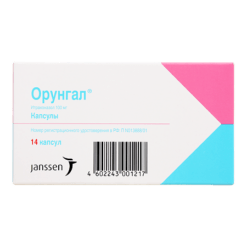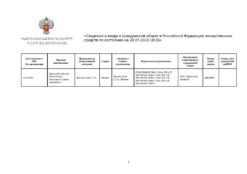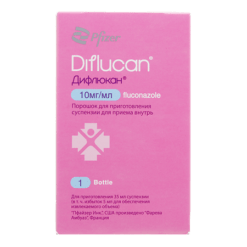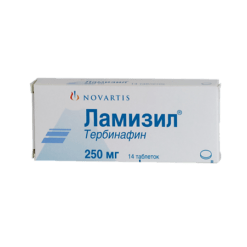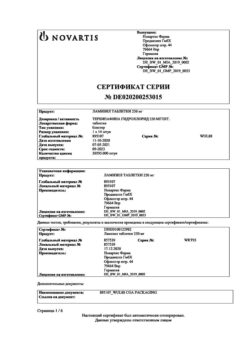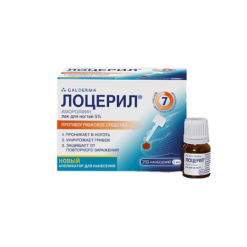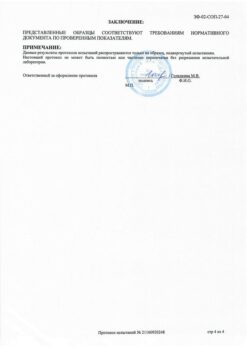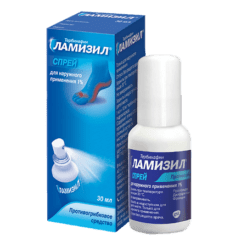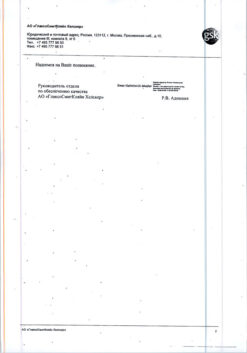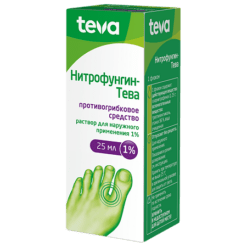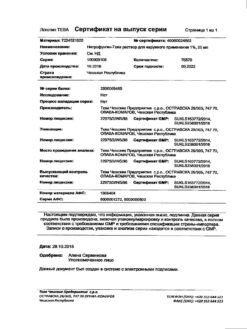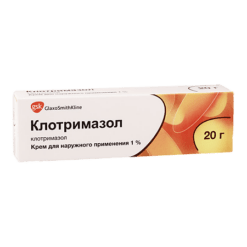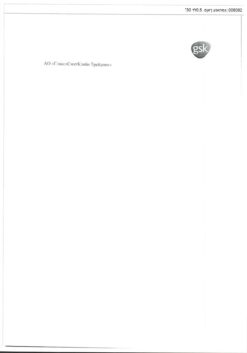No products in the cart.
Description Pharmacotherapeutic group: Antifungal agents
ATX: D.01.A.E.22 Naftifin
Pharmacodynamics
Naftifin is an antifungal agent for external use, belonging to the class of allilamines. The mechanism of action is associated with inhibition of squalene-2,3-epoxidase, which leads to a decrease in the formation of ergosterol, which is part of the cell wall of the fungus. It is active against dermatophytes such as Trichophyton, Epidermophyton, Microsporum, mold fungi (Aspergillus spp.), yeast fungi (Candida spp., Pityrosporum) and other fungi (such as Sporothrix schenckii).
With respect to dermatophytes and aspergillus naphthifin acts fungicidal. Against yeast fungi naphthifin shows fungicidal or fungistatic activity depending on the strain of the microorganism. It has antibacterial activity against Gram-positive and Gram-negative microorganisms that can cause secondary bacterial infections. It has anti-inflammatory action, which contributes to the rapid disappearance of symptoms of inflammation, especially itching.
Pharmacokinetics
When applied topically, naphthifin penetrates the skin well, creating sustained antifungal concentrations in its various layers. After application on the skin, less than 6% of naphthifin is absorbed systemically. The absorbed amount is partially metabolized and excreted by the kidneys and through the intestine. The half-life of naphthifin is 2-3 days.
Indications
Indications
– Fungal infections of the skin and skin folds (tinea corporis, tinea inquinalis);
– interdigital mycoses (tinea manum, tinea pedum);
– fungal nail infections (onychomycosis);
– skin candidiasis;
– pityriasis versicolor (pityriasis versicolor);
– ringworm (with or without accompanying itching).
The drug Naftoderil is effective in the treatment of mycoses affecting areas of the skin with hyperkeratosis, as well as in areas of hair growth.
Pharmacological effect
Pharmacological effect
Pharmacotherapeutic group: Antifungal agent
ATX: D.01.A.E.22 Naftifin
Pharmacodynamics
Naftifine is an antifungal agent for external use, belonging to the class of allylamines. The mechanism of action is associated with inhibition of squalene-2,3-epoxidase, which leads to a decrease in the formation of ergosterol, which is part of the cell wall of the fungus. Active against dermatophytes such as Trichophyton, Epidermophyton, Microsporum, molds (Aspergillus spp.), yeasts (Candida spp., Pityrosporum) and other fungi (for example, Sporothrix schenckii).
Naftifine has a fungicidal effect against dermatophytes and aspergillus. In relation to yeast fungi, naftifine exhibits fungicidal or fungistatic activity depending on the strain of the microorganism. It has antibacterial activity against gram-positive and gram-negative microorganisms that can cause secondary bacterial infections. It has an anti-inflammatory effect, which contributes to the rapid disappearance of symptoms of inflammation, especially itching.
Pharmacokinetics
When used externally, naftifine penetrates well into the skin, creating stable antifungal concentrations in its various layers. After application to the skin, less than 6% of naftifine is subject to systemic absorption. The absorbed amount is partially metabolized and excreted by the kidneys and intestines. The half-life of naftifine is 2-3 days.
Special instructions
Special instructions
The drug Naftoderil is not intended for use in ophthalmology. The drug should not come into contact with the eyes.
To achieve a therapeutic effect, a course of treatment is required.
Propylene glycol contained in the solution may cause skin irritation; If side effects occur, you should stop using the drug and consult a doctor.
Impact on the ability to drive vehicles. Wed and fur.:
The drug Naftoderil does not have a negative effect on the ability to drive vehicles and perform other activities that require concentration and speed of psychomotor reactions.
Active ingredient
Active ingredient
Naftifin
Composition
Composition
Composition per 100 g:
Active ingredient:
naftifine hydrochloride – 1.00 g.
Excipients:
cetostearyl alcohol – 8.00 g;
isopropyl myristate – 8.00 g;
polysorbate-60 – 6.10 g;
cetyl palmitate – 2.00 g;
sorbitan stearate – 1.90 g;
benzyl alcohol – 1.00 g;
sodium hydroxide – 0.12 g;
purified water – up to 100.00 g.
Contraindications
Contraindications
– Hypersensitivity to naftifine or other components of the drug;
– pregnancy and breastfeeding (safety and effectiveness of use have not been established).
– application to the wound surface.
With caution:
Children’s age (experience of clinical use is limited).
Side Effects
Side Effects
In some cases, local reactions may be observed: dry skin, skin hyperemia (redness) and burning. Side effects are reversible and do not require discontinuation of treatment.
If any of the side effects indicated in the instructions worsen, or any other side effects not listed in the instructions are noted, you should immediately inform your doctor.
Interaction
Interaction
Interaction with other drugs has not been studied.
Overdose
Overdose
When using the drug in accordance with the instructions for use, an overdose is unlikely.
In case of accidental ingestion, gastric lavage and symptomatic therapy are indicated.
Storage conditions
Storage conditions
At a temperature not exceeding 25 °C. Keep out of the reach of children.
Shelf life
Shelf life
3 years. Do not use after expiration date.
Manufacturer
Manufacturer
Kirov pharmaceutical factory, Russia
Additional information
| Shelf life | 3 years. Do not use after the expiration date. |
|---|---|
| Conditions of storage | At a temperature not higher than 25 ° C. Keep out of reach of children. |
| Manufacturer | Kirov Pharmaceutical Factory, Russia |
| Medication form | solution for external use |
| Brand | Kirov Pharmaceutical Factory |
Other forms…
Related products
Buy Naftoderil, 1% 20 ml with delivery to USA, UK, Europe and over 120 other countries.

